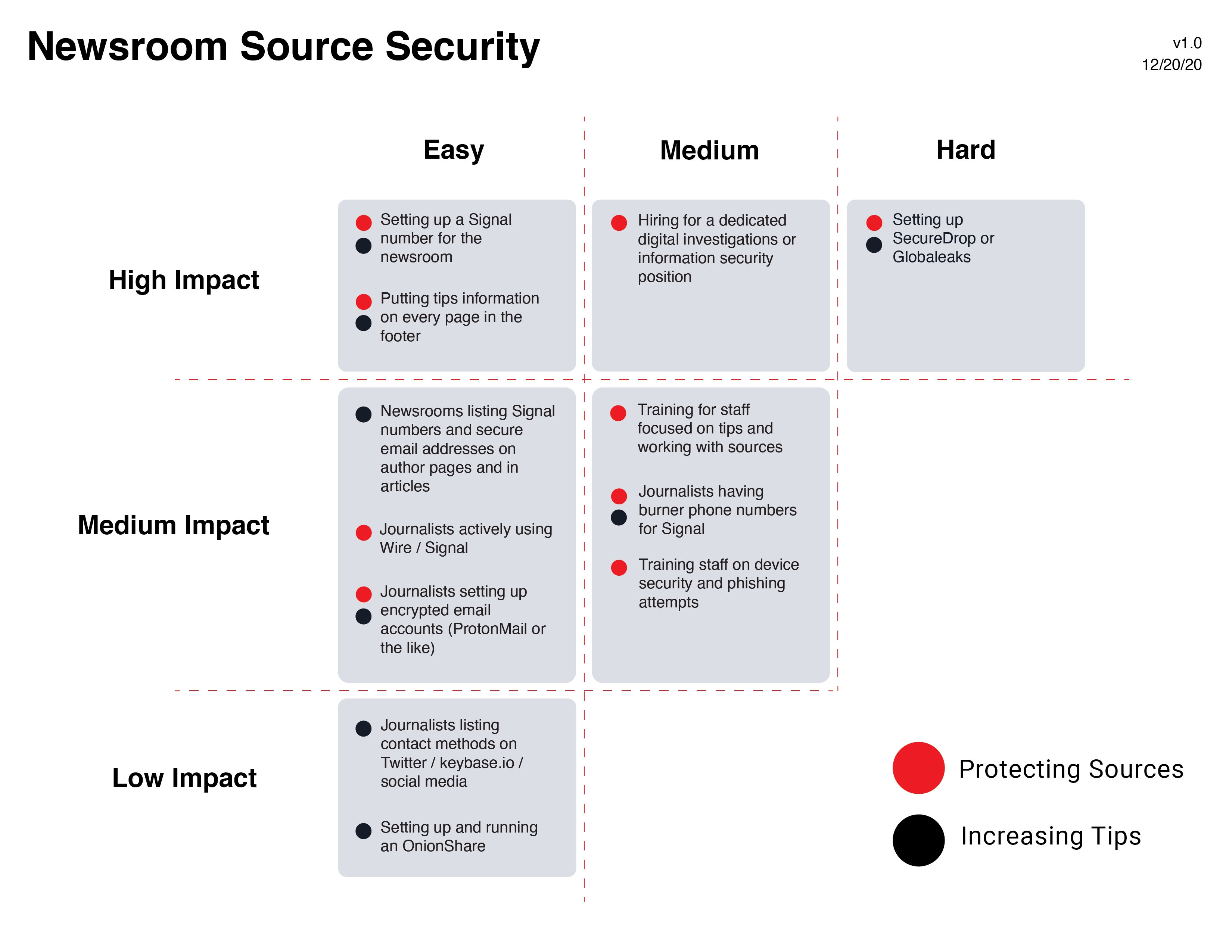There were a tremendous number of tips that whistleblowers sent directly to newsrooms in 2020. From the FinCen files to Trump’s taxes, revelations of sexual harassment to leads about discrimination and inequitable treatment – there were tips coming in from across the country and across industries.
But how can a newsroom make sure that they are the ones to receive these exclusive tips?
My book, A Public Service: Whistleblowing, Disclosure, and Anonymity, is a guide for would-be whistleblowers to safely reveal information to the public, with a focus on working with partners in the media. The last chapter in the book, “Recommendations for Partners,” explores how lawyers, journalists, and government officials can support whistleblowers as they come forth to report fraud, waste, abuse, and injustices.
In this blog, I will expand on the general recommendations in the book and look at actual digital security, web, and infrastructure measures that media organizations can implement.
Here at Alley, I work specifically on Lede, a platform optimized for teams of journalists who are ready to create robust media organizations. We bring custom-designed sites to life with newsletters, subscriber paywalls, and above all else: strategic guidance. One of the things I oversee is ensuring that we’re following best practices for source security and tips in the sites we build.
So while all media organizations are unique, there are enough similarities that I was able to create a set of concrete steps that any organization or journalist can follow to protect sources and to increase the likelihood of receiving tips.
Below is a matrix that outlines these steps, organized by the level of effort needed to execute that step, as well as the impact that that initiative can have.

Perhaps you are interested in implementing some of these suggestions in your newsroom but don’t know where to begin. I recommend following the steps in this order, starting with the ones that require the least effort but have the most impact:
- Set up a Signal number for the newsroom.
- Put information on how to give tips on every page in the footer.
- List Signal numbers and/or Wire usernames as well as secure email addresses on author pages and in articles.
- Hire for a dedicated digital investigations/information security position.
- Train staff on managing tips intake and security.
- Encourage journalists to use Wire / Signal actively.
- Encourage journalists to set up an encrypted email account (like ProtonMail).
- Provide journalists with burner phone numbers for Signal.
- Provide general security training for staff on device security and phishing attempts.
- Have journalists list contact methods on Twitter, keybase.io, and other social media.
- Set up and run an OnionShare.
- Set up SecureDrop or Globaleaks.
Stay safe out there, and start using Signal or Wire right now!
